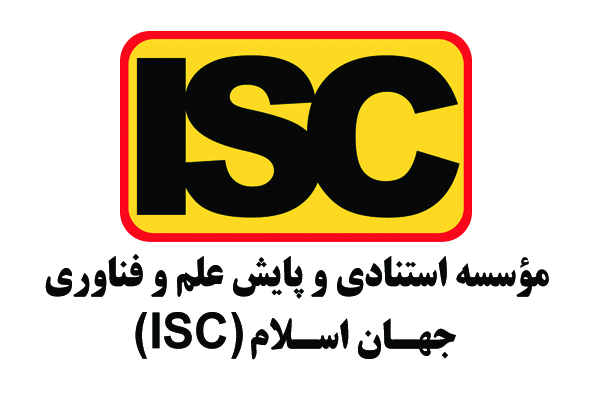Designing a Qualitative Model of Procedural Justice for Teleworking Employees in the Public Sector
Keywords:
procedural justice, remote work of employees, government organizationsAbstract
Procedural justice for teleworking employees in the public sector establishes a framework for fair behavior, enhances trust and engagement, increases job satisfaction, and ultimately contributes to a more effective and resilient organization. The main objective of this research is to design a qualitative model of procedural justice for teleworking employees in the public sector. The research design of this study is qualitative, utilizing a content analysis method. The study population consists of experts in public management who have conducted research in the fields of procedural justice and teleworking. The sampling method is snowball sampling, through which 15 individuals were interviewed. Data collection was carried out using semi-structured open interviews. To assess the validity of the instrument, content validity (by experts) and face validity were employed. Cohen’s kappa coefficient was used to validate the coding process and ensure the quality control of the questionnaire in the qualitative section. The findings revealed that the qualitative model of procedural justice for teleworking employees in the public sector includes justice and transparency in processes, infrastructure and support, performance management and productivity, organizational culture and interactions, and individual empowerment and development.
Downloads
References
Alipour, H. (2019). Identifying and Ranking Human Resource Challenges to Enhance Teleworking Productivity in Public
Organizations. Productivity management, 14(52), 97-116.
Apgar, M. (2022). The Alternative Workplace: Changing Where and How People Work. Harvard business review, 121-136.
https://hbr.org/1998/05/the-alternative-workplace-changing-where-and-how-people-work
Baroch, L. (2020). Telecommuting: Implementation for Success. International Journal of Business and Social Science, 3, 20-
https://ijbtob.org/index.php/ijbtob/article/view/105
Golparvar, M. (2021). Relationship Between Distributive and Procedural Justice with Job Satisfaction and Organizational
Commitment, Considering Demographic Moderators. Shushtar Social Sciences, 5(3), 18-29.
http://ensani.ir/fa/article/363294/%D8%B1%D8%A7%D8%A8%D8%B7%D9%87-
%D8%B9%D8%AF%D8%A7%D9%84%D8%AA-%D8%AA%D9%88%D8%B2%DB%8C%D8%B9%DB%8C-
%D9%88-%D8%B9%D8%AF%D8%A7%D9%84%D8%AA-%D8%B1%D9%88%DB%8C%D9%87-
%D8%A7%DB%8C-%D8%A8%D8%A7-%D8%B1%D8%B6%D8%A7%DB%8C%D8%AA-
%D8%B4%D8%BA%D9%84%DB%8C-%D9%88-%D8%AA%D8%B9%D9%87%D8%AF-
%D8%B3%D8%A7%D8%B2%D9%85%D8%A7%D9%86%DB%8C-%D8%A8%D8%A7-
%D8%AA%D9%88%D8%AC%D9%87-%D8%A8%D9%87-%D9%86%D9%82%D8%B4-
%D8%AA%D8%B9%D8%AF%DB%8C%D9%84-%DA%A9%D9%86%D9%86%D8%AF%D9%87-
%D9%85%D8%AA%D8%BA%DB%8C%D8%B1-%D9%87%D8%A7%DB%8C-
%D8%AC%D9%85%D8%B9%DB%8C%D8%AA-%D8%B4%D9%86%D8%A7%D8%AE%D8%AA%DB%8C
Mann, S., Varey, R., & Button, W. (2019). An Exploration of the Emotional Impact of Teleworking via Computer-Mediated
Communication. Journal of managerial psychology, 15(7), 668-690. https://doi.org/10.1108/02683940010378054
Pérez, M. P., Sánchez, A. M., de Luis Carnicer, P., & Jiménez, M. J. V. (2019). The Differences of Firm Resources and the
Adoption of Teleworking. Technovation, 25(12), 1476-1483. https://doi.org/10.1016/j.technovation.2005.04.002
Péterz, M. P., Sánchez, A. M., & de Luis Carnicer, M. P. (2020). Benefits and Barriers of Telework: Perception Differences of
Human Resources Managers According to Company's Operations Strategy. Technovation, 22(12), 775-783.
https://doi.org/10.1016/S0166-4972(01)00069-4
Ramin Mehr, H. (2023). Strategic Evaluation of the Teleworking Model for Employees. Strategic Management Studies(14),
-73. https://jfr.sbu.ac.ir/index.php/Economicsandmodeling/search/article_103230.html?lang=enس
Sohrabi, B. (2019). Teleworking: Concepts and the Planning Process. https://civilica.com/doc/916658/
Stiles, J. (2020). Strategic Niche Management in Transition Pathways: Telework Advocacy as Groundwork for an Incremental
Transformation. Environmental Innovation and Societal Transitions, 34, 139-150.
https://doi.org/10.1016/j.eist.2019.12.001
Tahavori, Z. (2020). Teleworking in the National Library and Archives of the Islamic Republic of Iran. National Studies on
Librarianship and Information Organization, 23(4), 21-32. https://www.sid.ir/paper/488845/fa
Zhang, S., Moeckel, R., Moreno, A. T., Shuai, B., & Gao, J. (2021). A Work-Life Conflict Perspective on Teleworks.
Transportation Research Part A: Policy and Practice, 141, 51-68. https://doi.org/10.1016/j.tra.2020.09.007
Ziaee, M. S. (2019). Developing a Teleworking Architecture Framework in the Ministry of Cooperatives, Labor, and Social
Welfare. Information Technology Management, 5(3), 119-138.
http://ensani.ir/fa/article/478786/%D8%AA%D8%AF%D9%88%DB%8C%D9%86-
%DA%86%D8%A7%D8%B1%DA%86%D9%88%D8%A8-
%D9%85%D8%B9%D9%85%D8%A7%D8%B1%DB%8C-
%D8%AF%D9%88%D8%B1%DA%A9%D8%A7%D8%B1%DB%8C-%D8%AF%D8%B1-
%D9%88%D8%B2%D8%A7%D8%B1%D8%AA-%D8%AA%D8%B9%D8%A7%D9%88%D9%86-
%DA%A9%D8%A7%D8%B1-%D9%88-%D8%B1%D9%81%D8%A7%D9%87-
%D8%A7%D8%AC%D8%AA%D9%85%D8%A7%D8%B9%DB%8C
Downloads
Published
Submitted
Revised
Accepted
Issue
Section
License
Copyright (c) -1 Journal of Technology in Entrepreneurship and Strategic Management (JTESM)

This work is licensed under a Creative Commons Attribution-NonCommercial 4.0 International License.











